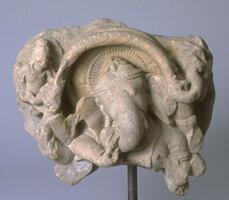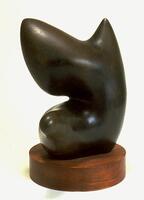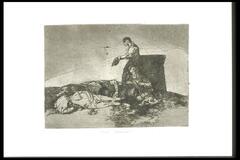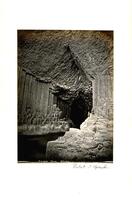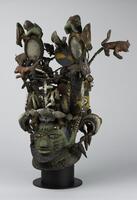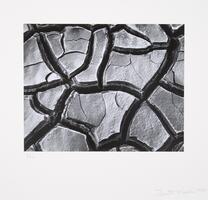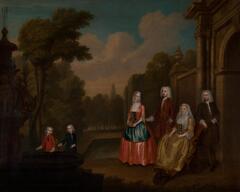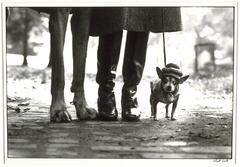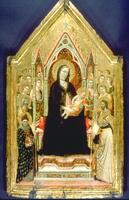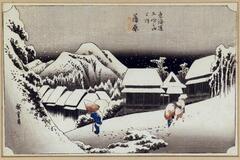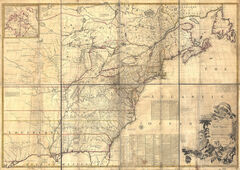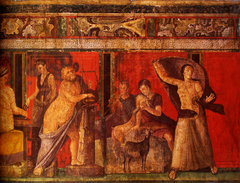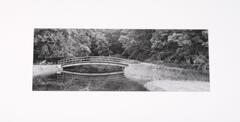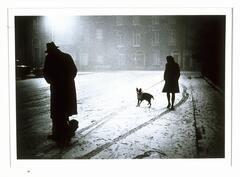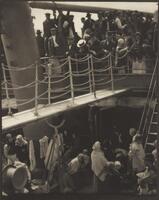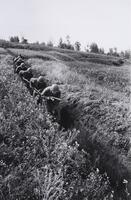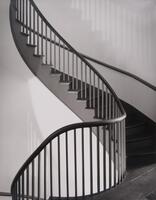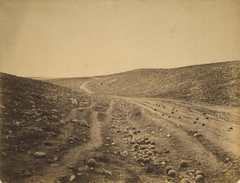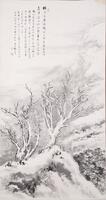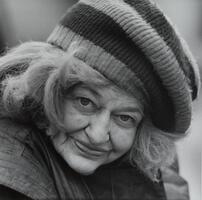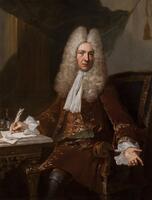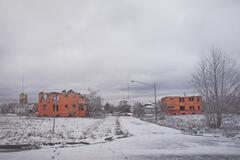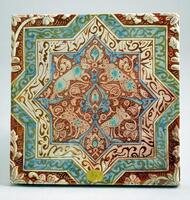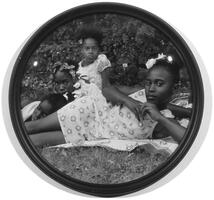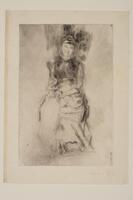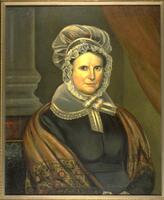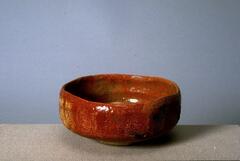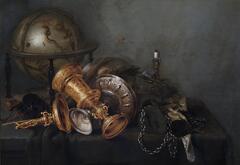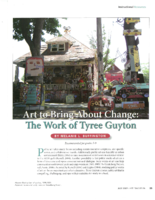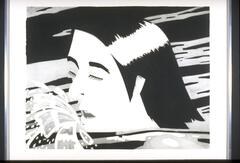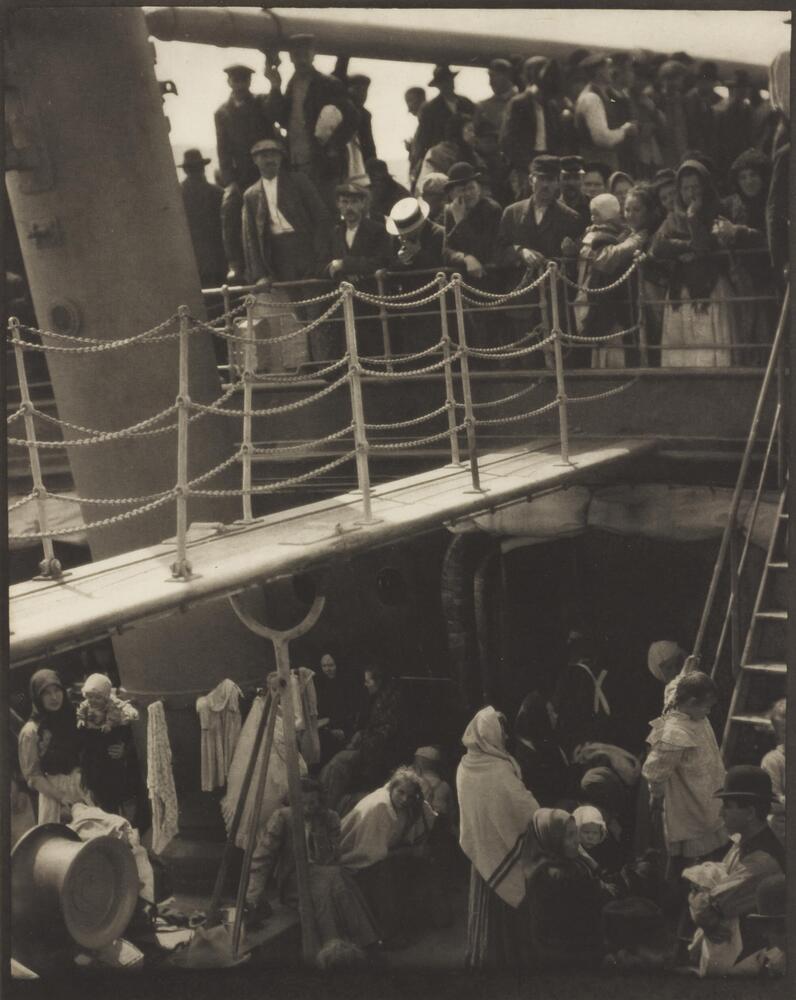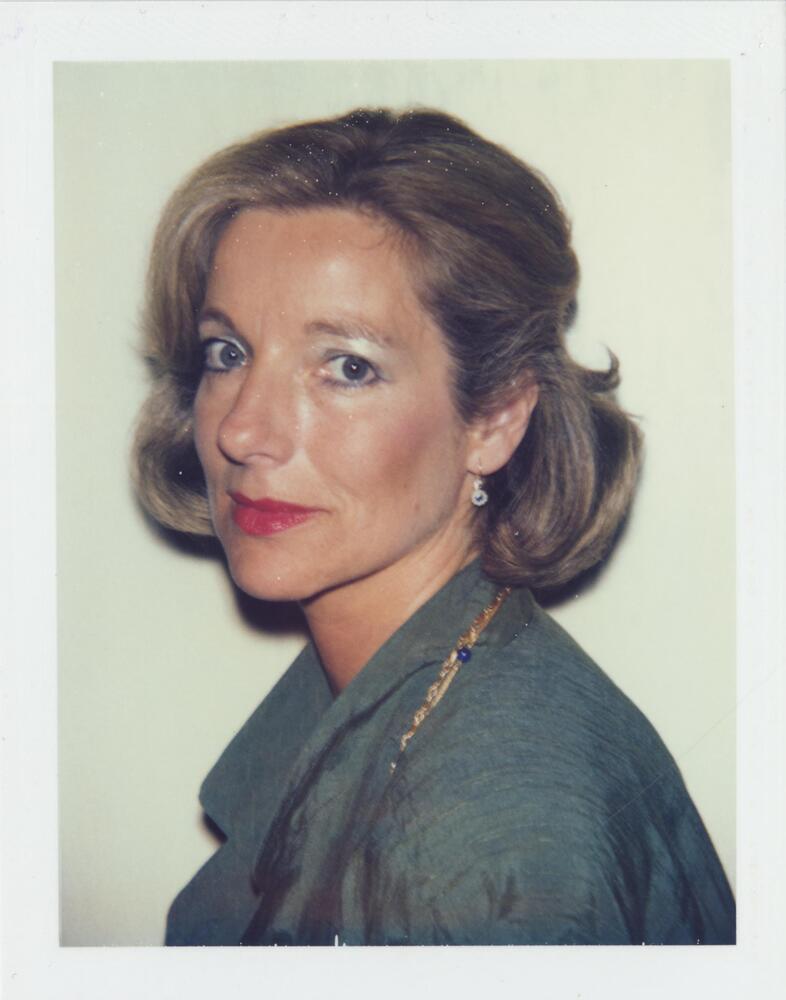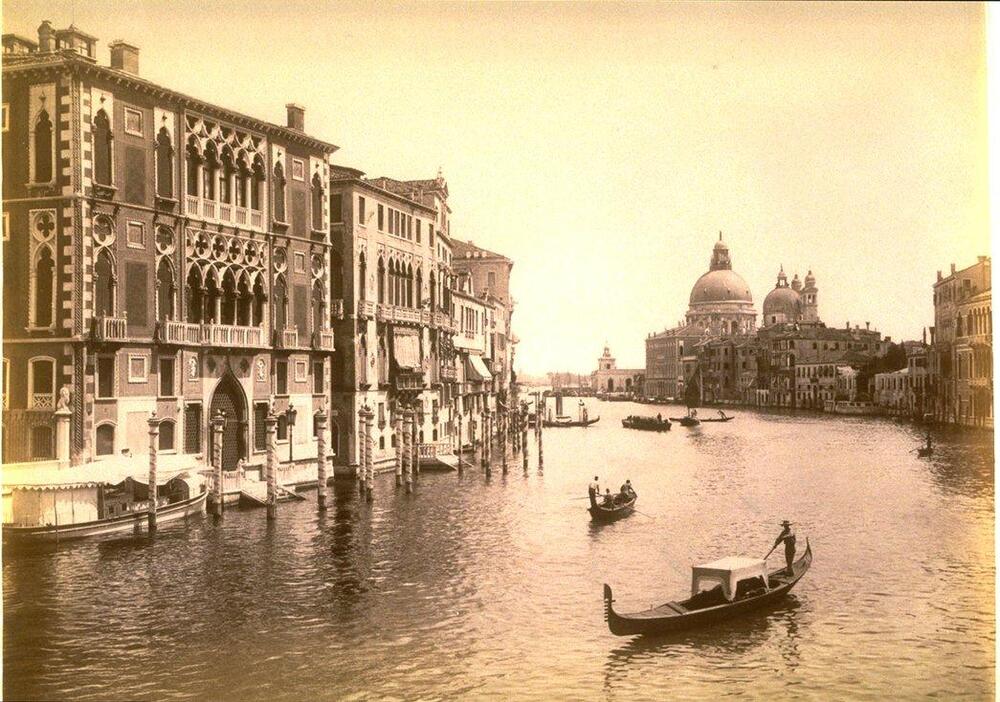Lesson Plan: Photographic Genre Image Hunt
“Inge Morath and Arthur Miller: China,” UMMA Teacher Workshop, February 6, 2008 Lesson adapted from Arts Online, by photographer Ans Westra
Objectives
Students will examine photographs and identify their different functions (documentary, persuasive, portraiture).
National Core Standards
- Apply criteria to evaluate artistic work
Grades
6-8
Time Required
One class period
Materials
- Scissors
- Paper or blank cards
- Cut-out or printed photographic images from magazines, online images, newspapers, family photos, posters, pamphlets, diagrams, billboards, etc.
Lesson
- Before class: ask students to bring in several (at least ten) photographic images from newspapers, books, magazines, online, recipe books, student ID cards, galleries, diagrams, illustrations, posters pamphlets, billboards, etc.
- Before students enter, place bright labels on tables around the classroom with the following words: Teach, Buy Me!, News, Real Story, Made-Up Story, Discovery, Persuasion (Believe Me!)
- Photographs have various functions. Family snapshots preserve memories and help document relationships between loved ones and the passage of time. Travel photographs provide visual documentation of faraway places. Portraits preserve the likeness and characteristics of a person, family, or group. Sport photographs reveal action and the intensity of physical endeavors. Documentary photographs provide a candid, seemingly objective record of a cultural, social, or political event. Advertising photographs present a stylized, enhanced view in an effort to entice people to make purchases. Scientific photographs document subjects of investigation to record and share information including microscopic and telescopic views. Fine art photographs reveal an artist’s personal perspective.
Students should look at their photographs and consider:
● Does this photograph teach us something?
● Document an event or situation?
● Encourage the viewer to make a purchase?
● Tell a story about an actual event?
● Tell a story about a fictional event?
● Does this photograph reveal something?
● Persuade us to believe a certain political viewpoint?
- Students place their pictures on the table with the best description of the function of their photograph. After they have placed their photographs on tables ask them to stand next to one of their favorite photographs—not necessarily one they brought in. Go around the room and ask each student to say quickly why they put it on that table. Have them sit down at that table and write a sentence about what they just said on a card or separate piece of paper. What clues in the image tell the viewer the answers to these questions? Can an image have more than one function?
Part of 1 Learning Collection
Lesson Plan: Translating a Familiar Landscape
“Tradition Transformed: Chang Ku-nien Master Painte...
“Tradition Transformed: Chang Ku-nien Master Painte...
Lesson Plan: Collaborative Scroll of Images and Poetry
“Creative Literacies: Expanding our View,” UMMA Wor...
“Creative Literacies: Expanding our View,” UMMA Wor...
Lesson Plan: Compare and Contrast Drawing and Sculpture
UMMA Exhibition, “The Graphic Dimension: Prints and...
UMMA Exhibition, “The Graphic Dimension: Prints and...
Lesson Plan: Content and Style – Corresponding or Contradicting?
“Creative Literacies: Expanding our View,” UMMA Wor...
“Creative Literacies: Expanding our View,” UMMA Wor...
Lesson Plan: Setting the Scene – Descriptive Writing with Photography
“Teaching with Photography,” UMMA Workshop for Educ...
“Teaching with Photography,” UMMA Workshop for Educ...
Lesson Plan: Not a Failure . . . Just a Draft
“Creative Literacies: Expanding our View,” UMMA Wor...
“Creative Literacies: Expanding our View,” UMMA Wor...
Lesson Plan: Calligraphy and Radial Design in Islamic Art
Lesson adapted from Educator Resources, Victoria & ...
Lesson adapted from Educator Resources, Victoria & ...
Lesson Plan: Memory Maps, Using the Mitchell Map (1755)
“Benjamin West: General Wolfe and the Art of Empire...
“Benjamin West: General Wolfe and the Art of Empire...
Lesson Plan: Multipoint Perspective: Using Art to Teach Writing
“Creative Literacies: Expanding our View,” UMMA Wor...
“Creative Literacies: Expanding our View,” UMMA Wor...
Lesson Plan: The New Sublime and Photographic Landscape
“Teaching with Photography” UMMA Teacher Workshop,...
“Teaching with Photography” UMMA Teacher Workshop,...
Lesson Plan: Panorama Handscroll Using Multiple Literacies
Lesson inspired by Elaine Wilson’s “Charting the Wo...
Lesson inspired by Elaine Wilson’s “Charting the Wo...
Lesson Plan: Playing with Scale in Landscape or Still Life
“Tradition Transformed: Chang Ku-nien Master Painte...
“Tradition Transformed: Chang Ku-nien Master Painte...
Lesson Plan: Exploring the Emotional Impact of Portraiture Through Free Writing
UMMA Teacher Workshop, “Xu Weixin: Monumental Portr...
UMMA Teacher Workshop, “Xu Weixin: Monumental Portr...
Lesson Plan: Positive and Negative Space in Photography
“Teaching with Photography,” UMMA Workshop for Educ...
“Teaching with Photography,” UMMA Workshop for Educ...
Lesson Plan: Setting Up a Collaborative Short Story
“Teaching with Landscape Photography,” UMMA Teacher...
“Teaching with Landscape Photography,” UMMA Teacher...
Lesson Plans: Ideas for Writing with Portraits
UMMA Teacher Workshop, “Xu Weixin: Monumental Portr...
UMMA Teacher Workshop, “Xu Weixin: Monumental Portr...
Lesson Plan: Zoom In: The Significance of Detail
“Creative Literacies: Expanding our View,” UMMA Wor...
“Creative Literacies: Expanding our View,” UMMA Wor...
Tags
DocumentaryGenre
Image
Lesson
Persuasion
Persuasive
Photographic
Photography
Portrait
Portraiture
Rate this Resource
AVG: 0 | Ratings: 0
& Author Notes
Creative Commons by-nc-saLast Updated
March 6, 2017 1:19 a.m.Report
Reporting Policy

